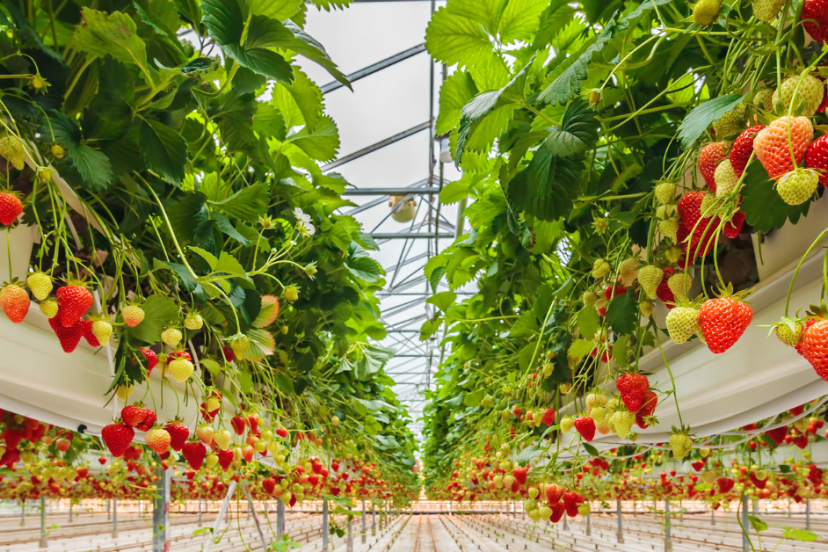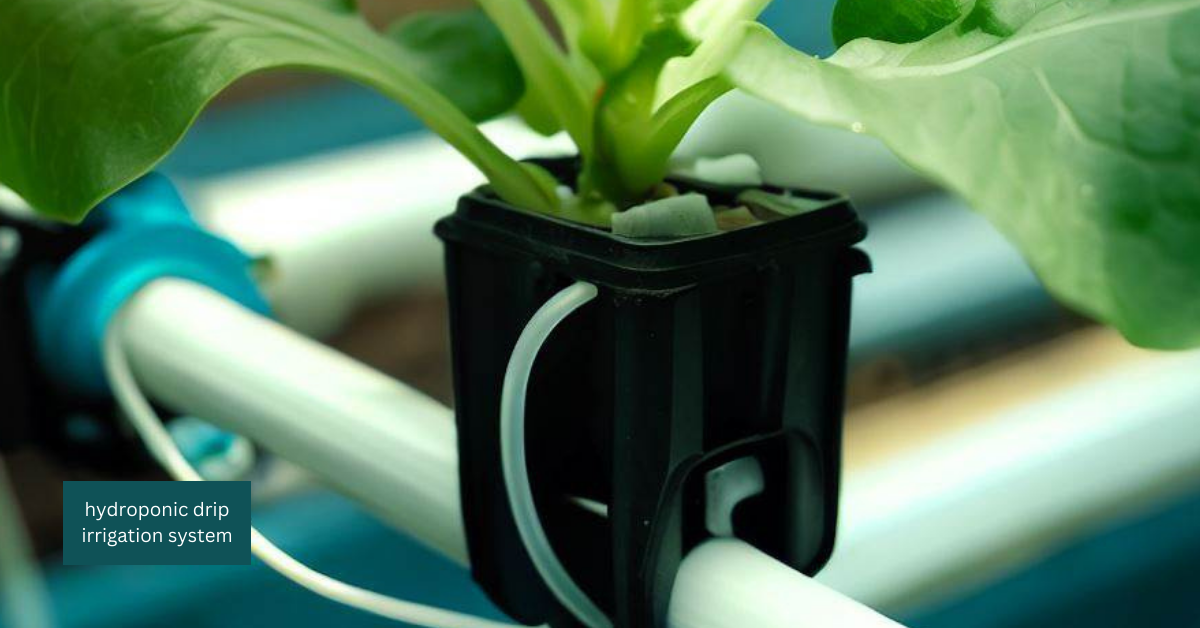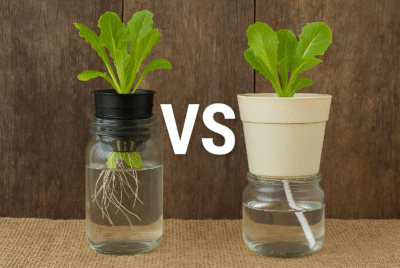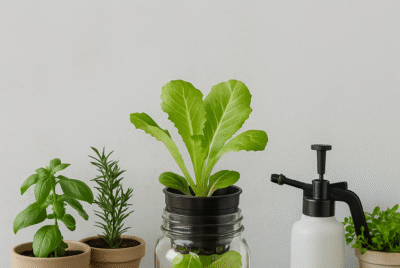Hydroponic Greenhouse: Tips & Tricks
As someone who loves to grow plants, I’ve tried different gardening methods over the years, including traditional soil gardening and hydroponic gardening. I’ve found that growing plants in a hydroponic greenhouse has many benefits, including better plant growth and a longer growing season. In this article, I’ll share my tips and tricks on how to grow plants in a hydroponic greenhouse.
Benefits of Hydroponic Greenhouse Gardening
Hydroponic greenhouse gardening offers several advantages over traditional soil gardening. Here are some of the key benefits:
- Better plant growth: Plants grown in a hydroponic greenhouse tend to grow faster and produce higher yields than those grown in soil. This is because they receive a consistent supply of nutrients and water, which allows them to focus on growing and producing fruit or flowers.
- Longer growing season: A hydroponic greenhouse allows you to extend your growing season and grow plants year-round, regardless of the weather outside. This means you can enjoy fresh produce even during the winter months.
- Water conservation: Hydroponic greenhouse gardening uses less water than traditional soil gardening, as the water is recirculated through the system. This makes it a more sustainable and eco-friendly option.
- Space-saving: Hydroponic gardening allows you to grow more plants in a smaller space, as they can be grown closer together and take up less room than traditional soil-based gardens.
Types of hydroponic greenhouses
Difficulty levels and setup considerations
Beginner Level:
1. Wick System Greenhouse: This is one of the simplest and most beginner-friendly hydroponic systems. Setup involves placing wicks in the growing medium and connecting a reservoir of nutrient solution. The wicks passively draw up the solution, providing water and nutrients to the plants.
2. Deep Water Culture (DWC) Greenhouse: DWC systems are relatively easy to set up. You’ll need a container or reservoir for the nutrient solution, an air pump, air stones or diffusers, and net pots to hold the plants. The roots are submerged in the nutrient solution, and the air pump provides oxygenation.
Medium Level:
3. Nutrient Film Technique (NFT) Greenhouse: NFT systems require slightly more technical knowledge but are still manageable for intermediate growers. Setup involves constructing sloping channels, installing a nutrient solution reservoir, and ensuring a constant flow of the solution over the roots.
4. Drip Irrigation Greenhouse: Drip systems are popular and versatile. Setup entails designing a network of tubes with emitters, connecting them to a nutrient solution reservoir, and placing the emitters near the base of each plant to deliver water and nutrients.
5. Ebb and Flow Greenhouse: Ebb and flow systems require a bit more setup effort. You’ll need trays or containers, a submersible pump, and a timer. The plants are periodically flooded with the nutrient solution from a reservoir, and then the solution drains away.
Expert Level:
6. Aeroponic Greenhouse: Aeroponic systems are more complex and typically recommended for experienced growers due to the precise control required. Setup involves misting or spraying the plant roots with a nutrient solution and ensuring a fine balance of mist and oxygenation.
7. Dutch Bucket Greenhouse: Dutch bucket systems can be more advanced due to their use of multiple individual containers. Setup includes arranging the buckets, filling them with a growing medium, connecting them to a nutrient solution reservoir, and managing the flow of the solution.
8. Tower or Vertical Greenhouse: Vertical systems can be challenging due to the structural considerations and proper water distribution. Setup involves constructing or purchasing vertical structures, setting up a pump, reservoir, and irrigation system, and carefully managing water flow and nutrient distribution.
9. Aquaponic Greenhouse: Aquaponic systems combine hydroponics with aquaculture, making them more advanced. Setup involves building or acquiring tanks for fish, designing a filtration system, and connecting the hydroponic components to the aquaculture system.
10. Floating Raft Greenhouse: Floating raft systems require careful attention to water quality and root health. Setup involves constructing a pool or tank for the nutrient solution, floating rafts, and managing the water chemistry and aeration.
Note: While some systems may be more complex, with proper research, guidance, and a hands-on approach, beginners can certainly tackle intermediate-level systems and eventually advance to expert-level setups.
It’s important to thoroughly study the specific requirements, such as nutrient balance, pH levels, lighting, and environmental control, for each hydroponic system before setting up to ensure the best results. Consider consulting guides, online resources, or experienced hydroponic growers for further assistance and guidance tailored to your chosen system.
How to Set Up Your Hydroponic Greenhouse
Setting up a hydroponic greenhouse is relatively easy, but it does require some planning and preparation.
Here are the basic steps you’ll need to follow:
- Firstly: Choose Your System
There are several different types of hydroponic systems to choose from, including deep water culture, nutrient film technique, and ebb and flow systems. Each has its own pros and cons, so it’s important to do your research and choose the system that’s right for you. - Secondly : Choose Your Plants
Once you’ve chosen your hydroponic system, you’ll need to decide which plants to grow. As we mentioned earlier, leafy greens such as lettuce, herbs, tomatoes, and strawberries are all great choices. - Thirdly: Set Up Your Greenhouse You’ll need to choose a location for your greenhouse that gets plenty of sunlight and has easy access to water and electricity. You’ll also need to set up your hydroponic system and install any necessary equipment like grow lights and fans.
- Fouthly: Start Your Seeds
Once your greenhouse is set up, it’s time to start your seeds. You can either purchase seedlings or start your seeds from scratch. If you’re starting from scratch, you’ll need to make sure you have the right equipment, like seed trays and grow lights. - Fifthly: Monitor and Maintain Your System
Once your plants are growing, it’s important to monitor and maintain your hydroponic system. This includes checking the pH and nutrient levels of your water, pruning your plants, and keeping an eye out for any signs of pests or disease.
Designing Your Hydroponic System
Designing your hydroponic system is an essential step in setting up your hydroponic greenhouse. Here are some things to keep in mind when designing your system:
- Water supply: Ensure you have a reliable water supply and a way to recirculate the water through your hydroponic system.
- Lighting: Your plants will need adequate lighting to grow, especially if you’re growing them indoors. Consider using LED lights or natural sunlight, depending on the location of your greenhouse.
- Ventilation: Good ventilation is essential to prevent the buildup of excess moisture and maintain a healthy environment for your plants.
Choosing the Right Plants for Hydroponic Greenhouse Gardening
When it comes to choosing the right plants for your hydroponic greenhouse, there are several factors to consider, such as the type of plants, the size of your greenhouse, and the climate in your area. Here are some plants that are well-suited for hydroponic greenhouse gardening:
Choosing the Right Placement and Structure for Your Hydroponic Greenhouse
The placement and structure of your hydroponic greenhouse are important factors to consider before starting your garden. Here are some tips to help you choose the right placement and structure:
- Placement: Choose a placement that receives plenty of sunlight and is protected from strong winds and other weather elements. It’s also important to ensure that the placement is accessible for maintenance and harvesting.
- Structure: The structure of your hydroponic greenhouse will depend on your budget and the type of plants you want to grow. You can choose from various materials, including glass, polycarbonate, and plastic. Consider the insulation and ventilation requirements of your plants when selecting the material for your greenhouse.
How to Choose Plants for Your Hydroponic Greenhouse
When it comes to choosing plants for your hydroponic greenhouse, you have a wide range of options. Some of the most popular plants to grow in hydroponic greenhouses include:
- Leafy Greens: Leafy greens like hydroponic lettuce, kale, and spinach are some of the easiest plants to grow in hydroponic systems. They grow quickly and don’t require a lot of space, making them ideal for small hydroponic greenhouses.
- Herbs: Herbs like basil, parsley, and cilantro are also great choices for hydroponic greenhouses. They can be grown in small spaces and provide a steady supply of fresh herbs for cooking.
- Tomatoes: Hydroponic Tomatoes are a bit more challenging to grow in hydroponic systems than leafy greens or herbs, but they’re still a popular choice. They require a bit more space and a bit more care, but the payoff is delicious, homegrown tomatoes.
- Strawberries: Hydroponic Strawberry fruits are another popular choice for hydroponic greenhouses. They’re easy to grow and produce a lot of fruit in a small space. Plus, there’s nothing quite like the taste of fresh, ripe strawberries.
Conclusion
Hydroponic greenhouse gardening is a rewarding and sustainable way to grow plants. By following the steps outlined in this article, you can create a thriving hydroponic garden that provides you with fresh produce year-round. From choosing the right plants and setting up your hydroponic system to monitoring your nutrient solution and lighting, every aspect of hydroponic greenhouse gardening is important. With time, patience, and dedication, you can create a beautiful and productive hydroponic garden that is sure to impress.
FAQ’s
1. Is hydroponic greenhouse gardening expensive?
A hydroponic greenhouse is a controlled environment where plants are grown using a soilless cultivation method called hydroponics. Instead of traditional soil, plants are grown in nutrient-rich water solutions, allowing for more efficient water and nutrient uptake.
The initial setup cost of a hydroponic greenhouse garden can vary depending on the system complexity and size. While there are upfront investments for equipment, such as lights, pumps, and growing mediums, hydroponics can offer long-term cost savings by maximizing water and nutrient efficiency and potentially yielding higher crop yields.
2. Can I use tap water for my hydroponic garden?
It depends on the quality of your tap water. Tap water can be used for hydroponic gardens, but it’s crucial to test and adjust its pH and nutrient levels. Tap water might contain minerals or chemicals that can impact plant health, so some growers choose to use filtered or purified water to avoid potential issues.
3. Do I need to use a grow tent for my hydroponic greenhouse garden?
The use of a grow tent is not mandatory for a hydroponic greenhouse garden. Greenhouses provide a controlled environment with natural light, temperature regulation, and protection from the elements. However, in certain situations, such as limited space or specific light requirements, using a grow tent within the greenhouse can provide additional control over environmental factors and optimize plant growth.
4. What types of plants grow well in hydroponic greenhouse gardening?
A wide range of plants can thrive in hydroponic greenhouse gardening. Leafy greens like lettuce, herbs such as basil and mint, vine crops like tomatoes and cucumbers, peppers, strawberries, and even flowers can be successfully grown in hydroponic systems. Choose plants that suit your preferences, market demand, and the specific conditions of your greenhouse.
5. How long does it take to set up a hydroponic greenhouse garden?
Answer: The time required for setting up a hydroponic greenhouse garden can vary based on factors like the size of the greenhouse, complexity of the chosen hydroponic system, prior experience, and available resources. It can range from a few days for simpler systems to several weeks or more for larger or more intricate setups. Planning, acquiring equipment, and ensuring proper installation and calibration are important aspects to consider for an efficient setup.
Common equipment used in hydroponic greenhouses includes growing containers (such as trays or channels), a recirculating system for nutrient delivery, pH and EC (electrical conductivity) meters to monitor and adjust nutrient levels, grow lights for supplemental lighting, ventilation systems for temperature and humidity control, and water filtration systems.
*We may earn a commission from purchases made through our links, at no cost to you. This does not affect our product recommendations. Please see our disclosure to learn more.





